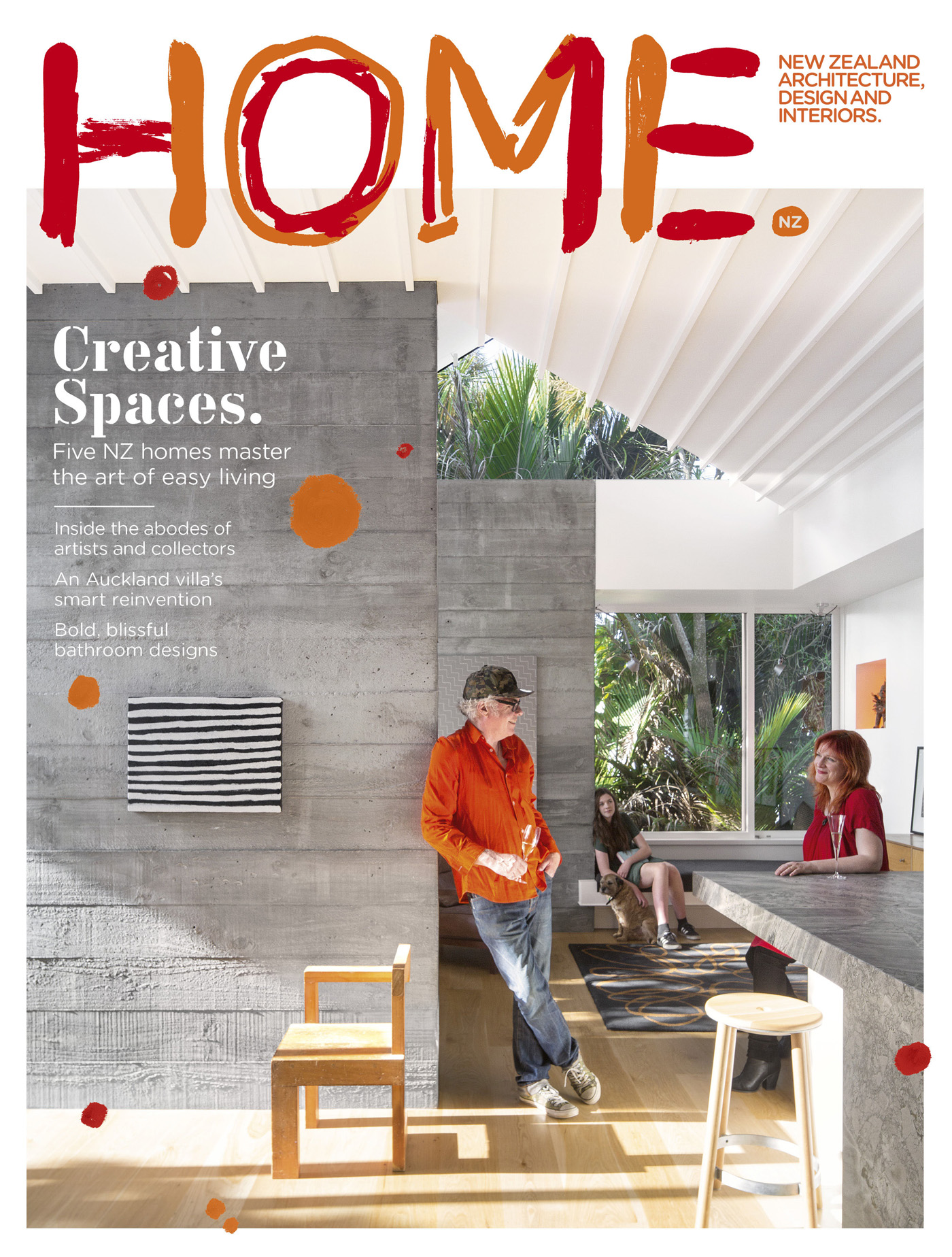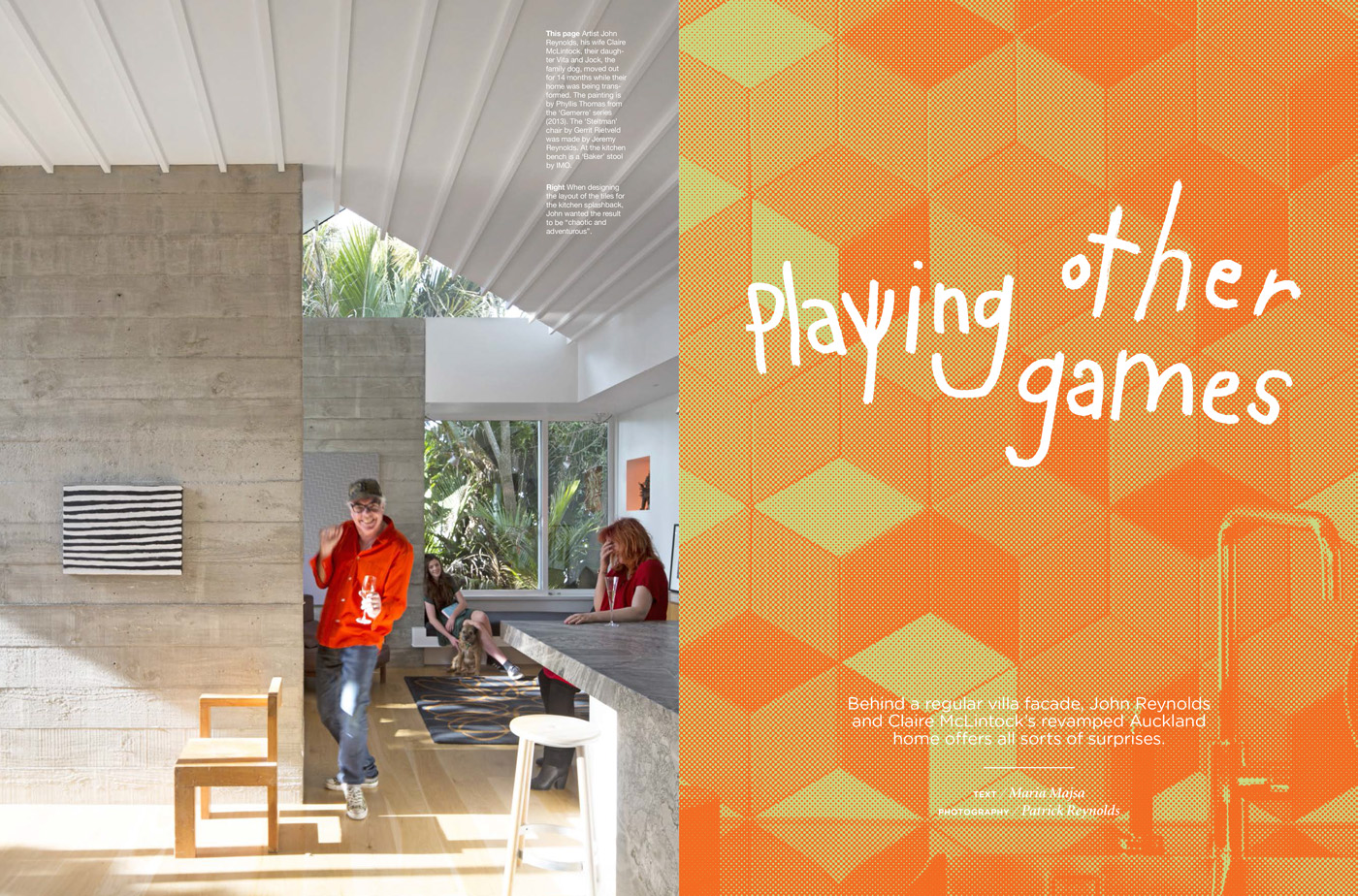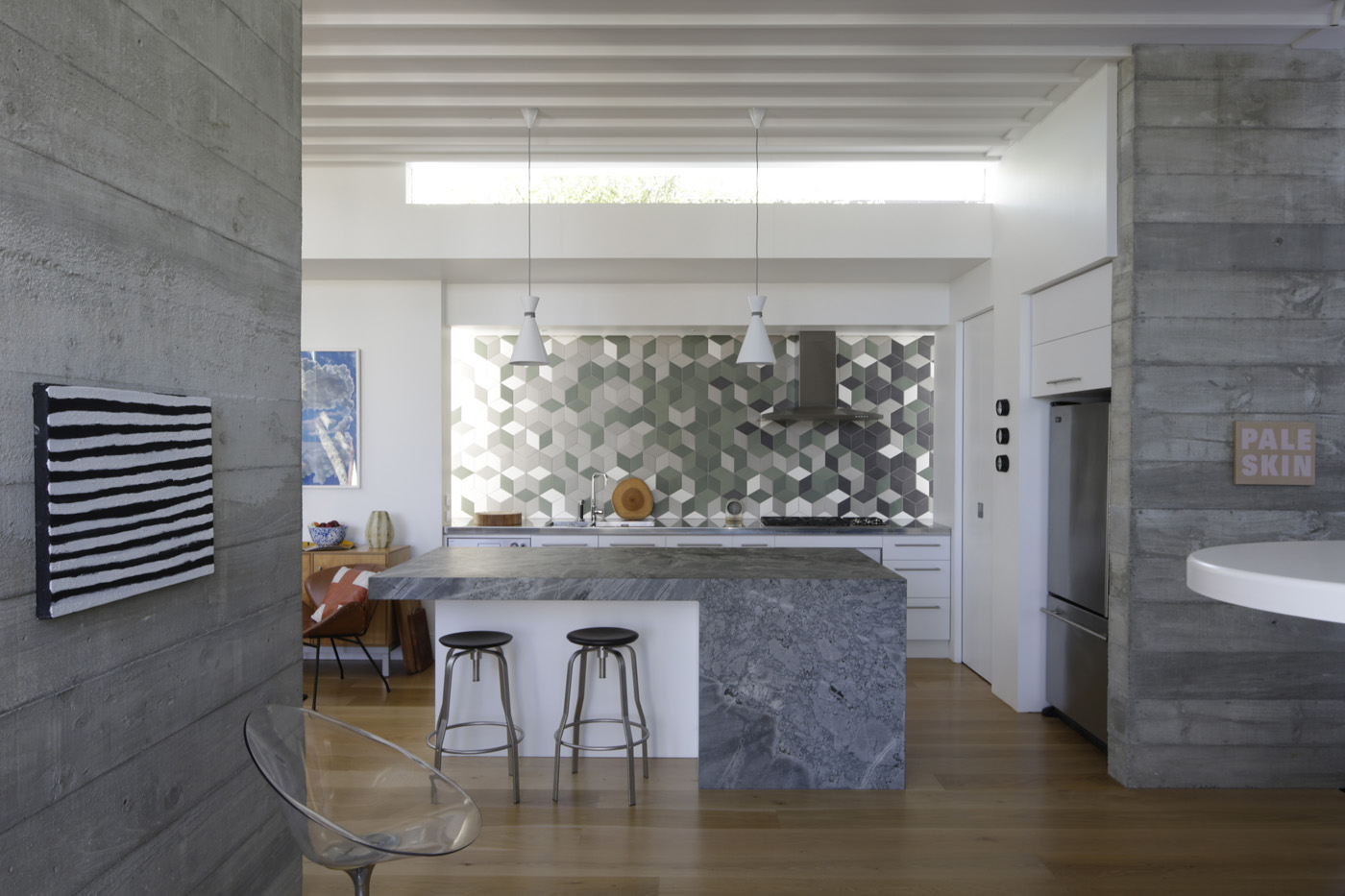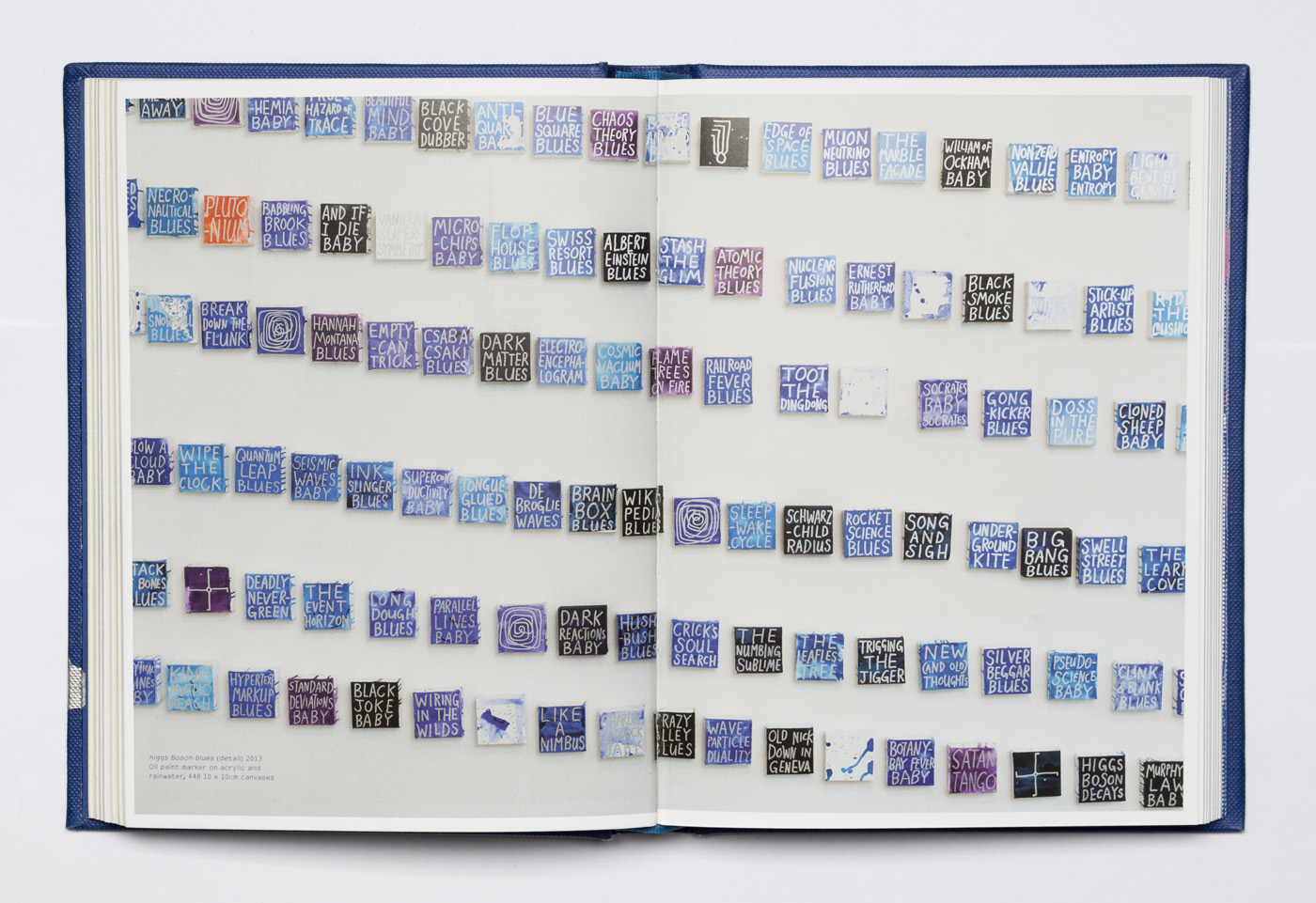
Artist John Reynolds – Arts Foundation Laureate, two-time Walters Prize nominee, Sydney Biennale headliner – is all over our latest issue. He and his wife, Claire McLintock, have lived in their villa in the Auckland suburb of Ponsonby for over 20 years, but it wasn’t until recently that they decided to stop living like students – the old place was almost falling down in parts – and asked architect Malcolm Walker to design a renovation for them. While we were photographing the house (John’s brother, Patrick Reynolds, took the photos of it for us), it seemed to make sense to ask John to collaborate with us in a more significant way. This is our annual Art Issue, after all.

So we’re very excited that John has not only reimagined the HOME masthead for this issue, but also drawn the headline typography for each of the five featured homes, AND created a poster that is free with every issue of our print edition (it’s A1 size, so it’s big!). Here it is:

And here’s the typographic treatment John created for the opening spread featuring his place. In the photo, he’s doing a little dance:

Here, John talks to HOME editor Jeremy Hansen about collaborating with the magazine, his new home and his life in art.
HOME Thanks for the cover treatment. How did you decide what our masthead needed?
JOHN REYNOLDS One of the more productive tendencies in my art practice seems to be the happy misreading of words or text as pure drawing. So the cover typography for HOME continues this recent play on words dissolving, collapsing or unravelling toward their fundamental drawn scaffolding. A word as a pictograph. With a similar economy of expression l tend to garland or festoon this varying legibility of the drawn word with an implied solar system of dots or efflorescences. This provides a compositional pull of orbits and scale shifts, a pictorial grammar of flares and fullstops.

HOME You’ve also created a poster for our print edition. What was your thinking behind it?
JOHN REYNOLDS Empty Room Theory might be understood as a corollary to the Butterfly Effect, a phrase which refers to the idea that a butterfly’s wings might create tiny changes in the atmosphere that may ultimately alter the path of a hurricane. Thus we might suggest an empty room is rich with the potential of seemingly minor events which may unexpectedly amplify, spiralling in dramatically unpredictable loops and storylines.

HOME You were a particularly skittish cover model. Do you not often stand still?
JOHN REYNOLDS In our Age of the Selfie we might all perhaps be a little more accommodating of the portraiture/posing process. Somehow that equanimity still deserts me.
HOME Your refurbished villa is in this issue. What are your favourite things about your new pad?
JOHN REYNOLDS Walking back into our new house after a recent stay in Canberra happily emphasised for me the heightened play of daylight and the generosity of the high articulated spaces. The rigour and mass of the in-situ concrete walls belies, of course, their delicate wood-textured surfaces and the poised sculptural alignments of these very un-villaesque features. And the real daily pleasure of living and working in a dry, insulated, and stable home which maximises site and orientation to light and privacy, cannot be over-stated. Bookshelves, storage and a real kitchen have also catapulted us from perpetual student living to a happy category of contemporary domesticity.

HOME What are you working on, apart from your obsession with hoovering your lovely new home?
JOHN REYNOLDS My current work revolves around a territory circumscribed in BLUTOPIA, a new book created with Arch MacDonnell and Laurence Simmons. Traversing the Kermadec project, to the Higgs Boson Blues and Nomadology, l hope the book posits a kind of blue manifesto. And, yes, living with carpet for the first time in over 30 years has added a new daily ritual: espresso with vacuuming.


You can read much more about John Reynolds’ new home and see more of his marvellous work in our February/March Art Issue, on newsstands from Monday February 2.




